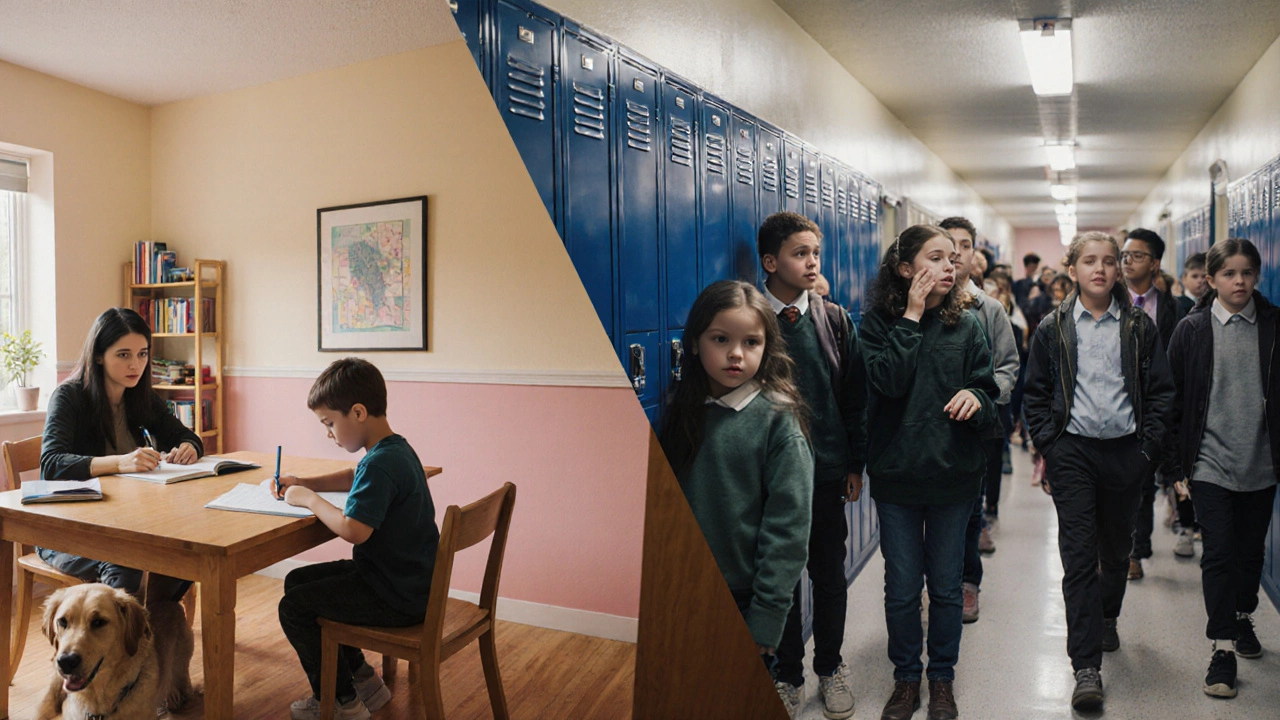Home Education Anxiety: Understanding and Managing Stress in Homeschooling
When dealing with home education anxiety, the worry that arises from teaching children at home. Also known as homeschool stress, it often shows up as sleepless nights, frustration, or doubt about the child’s progress. Homeschooling, the practice of educating children outside the traditional school system is the backdrop where this anxiety lives. Social interaction, the chance for children to engage with peers and adults becomes a key factor because limited contact can magnify worries about learning gaps and emotional well‑being. In simple terms, home education anxiety encompasses parental stress, learning environment concerns, and the need for balanced social opportunities. It requires parents to juggle lesson planning, emotional support, and day‑to‑day logistics, all while trying to keep the household calm. This first look sets the stage for deeper discussion on why the anxiety happens and how to keep it in check.
Key Factors That Drive the Anxiety
One major driver is parental stress, the pressure parents feel to meet academic standards and maintain family harmony. When parents worry about covering the curriculum, they often experience self‑doubt, which then feeds back into their child’s confidence. Another important piece is the learning environment, the physical and emotional space where home lessons happen. A cluttered or noisy room can increase frustration, while a well‑organized, inviting area can lower tension and boost focus. The relationship between these entities forms a clear semantic chain: parental stress influences the learning environment, which in turn affects home education anxiety. Additionally, the lack of regular social interaction can make children feel isolated, prompting parents to wonder if they’re missing essential peer learning experiences. This concern often leads families to seek community groups, co‑ops, or extracurricular activities as a remedy. Understanding how these elements intersect helps parents pinpoint where to intervene first—whether it’s adjusting the study space, setting realistic goals, or expanding social circles.
Now that the main players are clear, let’s talk about what you can actually do. Start by creating a simple schedule that balances structured lessons with free play; consistency reduces uncertainty for both child and parent. Next, carve out a dedicated, tidy workspace—good lighting, minimal distractions, and easy‑to‑reach supplies make lesson time smoother. Don’t underestimate the power of a short daily check‑in: ask your child how they feel about the material and listen without judgment. For the social side, join local homeschooling networks, arrange virtual meet‑ups, or enroll in community classes that spark interaction without overwhelming the family routine. Managing anxiety is less about eliminating stress entirely and more about building a realistic, supportive system that acknowledges challenges while providing concrete tools. The articles below dive deeper into each of these topics, offering expert tips, real‑world examples, and step‑by‑step guides to help you turn home education anxiety into a confident, rewarding experience.
Homeschooling vs Traditional Schooling: Mental Health Benefits and Risks
Explore how homeschooling impacts mental health, compare it with traditional schooling, spot warning signs, and get practical tips to support emotional wellbeing.
